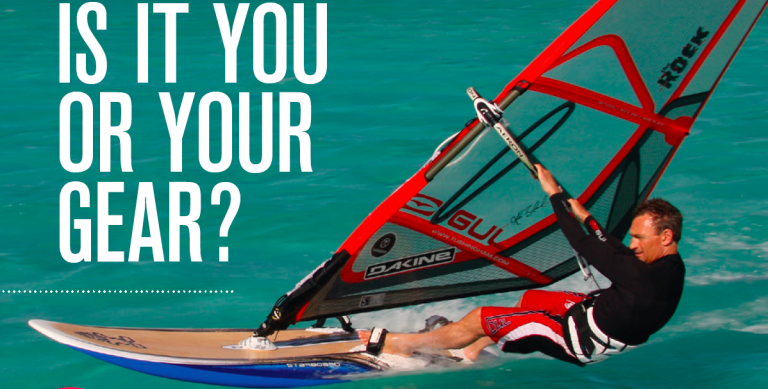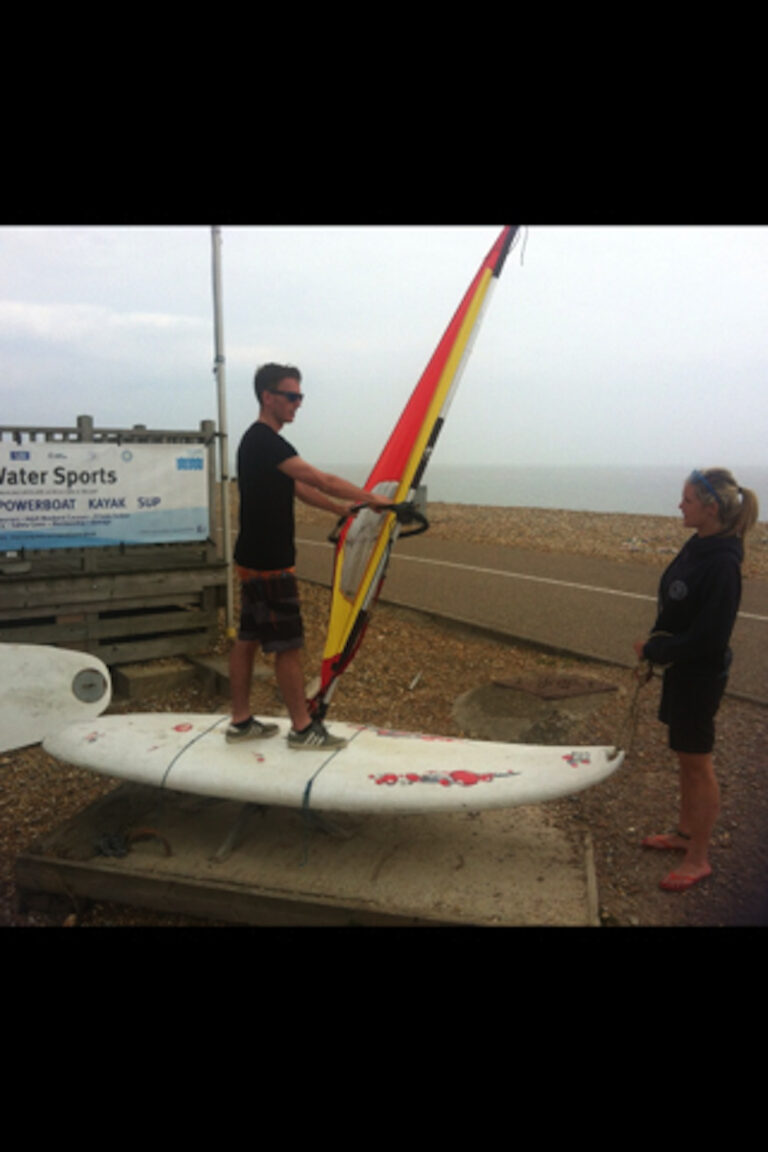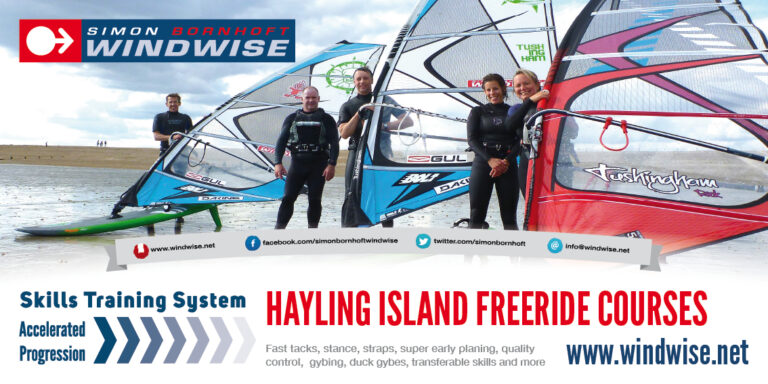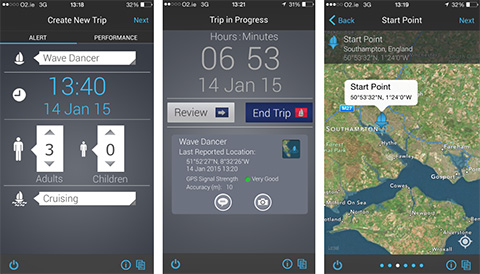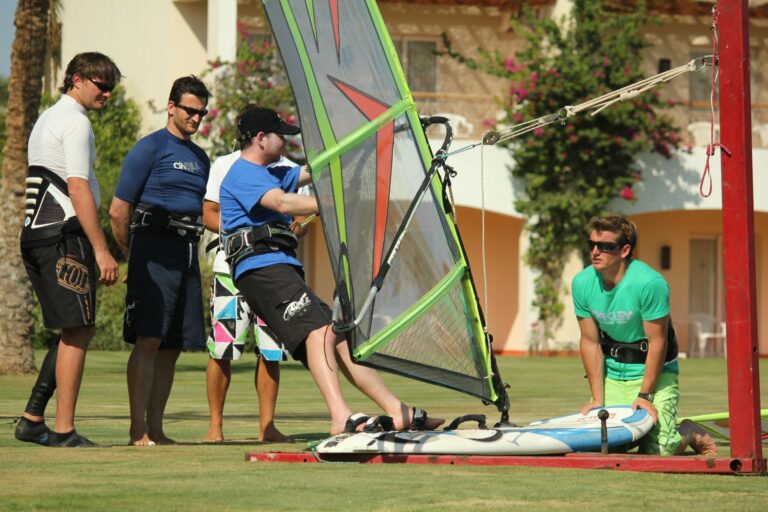Being fit can make a big difference to your time on the water. For recreational windsurfing, good cardio health, agility and conditioning are all you need to enhance your enjoyment. The RYA caught up with Windsurfing coach Simon Bornhoft to extol the virtues of becoming fitter for windsurfing.
‘I’m not fit and don’t really fancy the gym. What should I do?’
Start gently and gradually work up your cardio fitness level, working from low to higher intensity sessions.
‘Doing what exactly?’
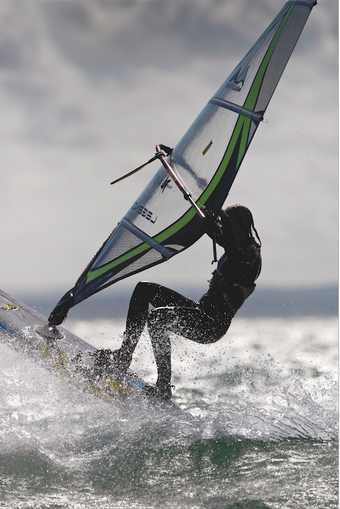 Low-intensity training requires exercising at 55% to 75% of your maximum heart rate (MHR) for reasonable lengths of time: your MHR is 220 minus your age. If you haven’t got a heart rate monitor, count your pulse from your wrist or neck for 15 seconds and times it by four. Fifty-five to 75% of your MHR feels like you’re breathing rapidly, but you can still hold a conversation. The objective is to increase stamina and underlying fitness, so just get active with regular 30-minute sessions, building up to two to three hours a week at 50% to 75% of your MHR. Suggested exercises: cycling, swimming, running, rowing, canoeing, paddle boarding, boxercise or circuit training.
Low-intensity training requires exercising at 55% to 75% of your maximum heart rate (MHR) for reasonable lengths of time: your MHR is 220 minus your age. If you haven’t got a heart rate monitor, count your pulse from your wrist or neck for 15 seconds and times it by four. Fifty-five to 75% of your MHR feels like you’re breathing rapidly, but you can still hold a conversation. The objective is to increase stamina and underlying fitness, so just get active with regular 30-minute sessions, building up to two to three hours a week at 50% to 75% of your MHR. Suggested exercises: cycling, swimming, running, rowing, canoeing, paddle boarding, boxercise or circuit training.
‘What does high intensity involve?’
If you’re already taking regular exercise, it’s a good idea to do shorter, higher intensity interval or sprint sessions, working at 70% to 85% of your MHR. This means that you’re working harder, often sweating and can barely hold a conversation. Start with a ten-minute warm-up at 50% to 70% of your MHR. Then three-minute sprints at 70% to 85% of your MHR, followed by a two-minute recovery. Repeat three to four times. Do this two to three times a week and you’ll soon see a difference. Suggested exercises: biking, running, rowing or circuit training.
‘I already enjoy exercise, but want to target my windsurfing muscles’
Windsurfing is primarily an asymmetrical exercise, yet also involves twisting, turning and tension of the body, counterbalancing against a rig whilst on a moving board. So windsurfing conditioning should include movements involving a mix of strength, balance, mobility and core stability. Tension and effort whilst balancing strengthens the muscles deep down at the front and rear of the lower spine that act with the abdominal muscles during exertion: commonly referred to as core stability. This contributes towards your whole body mechanics, balance and power on a board. So, for specific windsurfing training, one of the best approaches is to minimise static gym machines (apart from a rowing machine, which is a great all-rounder for windsurfing conditioning) and add balance and or agility to your exercises. For instance, do press-ups with your feet supported on a balance ball or do light weights sitting on or, with experience, kneeling on a Swiss ball, or turn your workout into more of a circuit session, keeping as mobile as possible between exercises.
Windsurfing workout
Windsurfing is a complete body workout, so whilst there are many more options than those listed here, these are well-known exercises that will help to prepare you for windsurfing. Mix and match these exercises to include each of the main muscle groups, but most importantly, do something! As ever, if you’ve never done these exercises before or don’t know what they are, get assistance from your local gym or personal trainer.
• Ten-minute warm-up (fast walk, jog, row or cycle).
• Do ten to 20 repetitions or up to 30 seconds for each set (build up the duration if you’re not used to it).
• Complete two to three sets of each exercise with a short breather between sets (see the table opposite for examples).
• Many personal trainers say that the greatest benefits come from the first set. So do it well!
• Take a short break of one to two minutes before moving on to the next exercise.
• Use a slow, controlled action; start with very light weights, maintaining good posture and stabilising the torso.
• Exhale during maximum exertion and stop it if hurts.
• Gently stretch and warm down each muscle group to finish your workout.
Balance options
• Beginner/not fit: do these exercises with your feet on the ground to get started.
• Improver/getting fitter: add a Bosu (half ball) to increase balance element.
• Advanced/gym nut: use a Swiss ball to increase difficulty.
Mix it up
Variation and cross-training is always a good idea, so try adding in exercises such as TRX cable sessions, military-style circuits, Pilates, yoga or specific Swiss/balance ball classes. Anything that involves mobility, strength and agility is going to contribute towards windsurfing fitness. There are, of course, endless different opinions or alternative exercises that could be elaborated on, but these will give you a good head start and hopefully inspire you to do more. Keep it simple, do something well regularly and increase its relevance into your weekly timetable. As with any goal or task, make it very specific and do something about it – now! Go for a bike ride or book a circuit class; your extra fitness may just add a few extra knots to your gybing speed.
Health and safety
Seek professional assistance when trying any of these exercises for the first time. Start gently, stop if it hurts and seek medical advice before starting strenuous exercise if you have any pre-existing health issues that might affect your fitness routine or wellbeing.
The table shows how different exercises work various muscle groups, and how they will help you when you take to the water to go windsurfing.
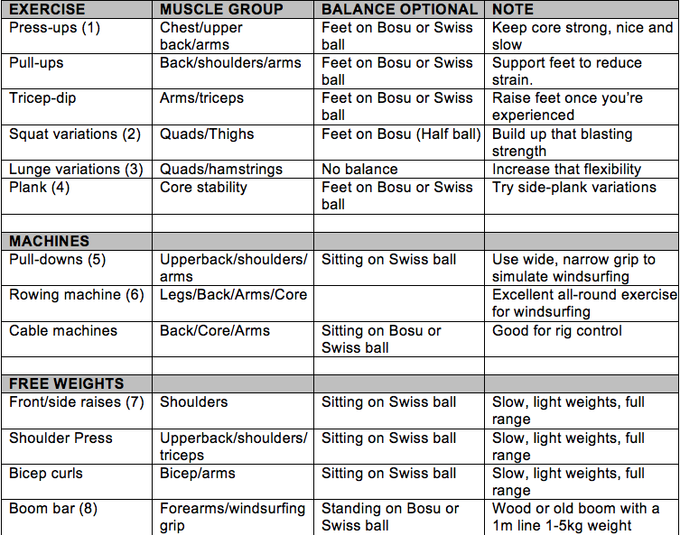
For information about RYA windsurfing training courses visit www.rya.org.uk/training
Love Windsurfing? Then why not join the association that promotes and protects, safe, successful and rewarding British windsurfing. Join today and support the RYA in protecting your rights and freedoms. Take advantage of free advice and support on a wide range of windsurfing topics; enjoy free third party insurance, as well as a fantastic range of personal member offers. Find out more by calling 0844 556 9556, email [email protected] or visit www.rya.org.uk

